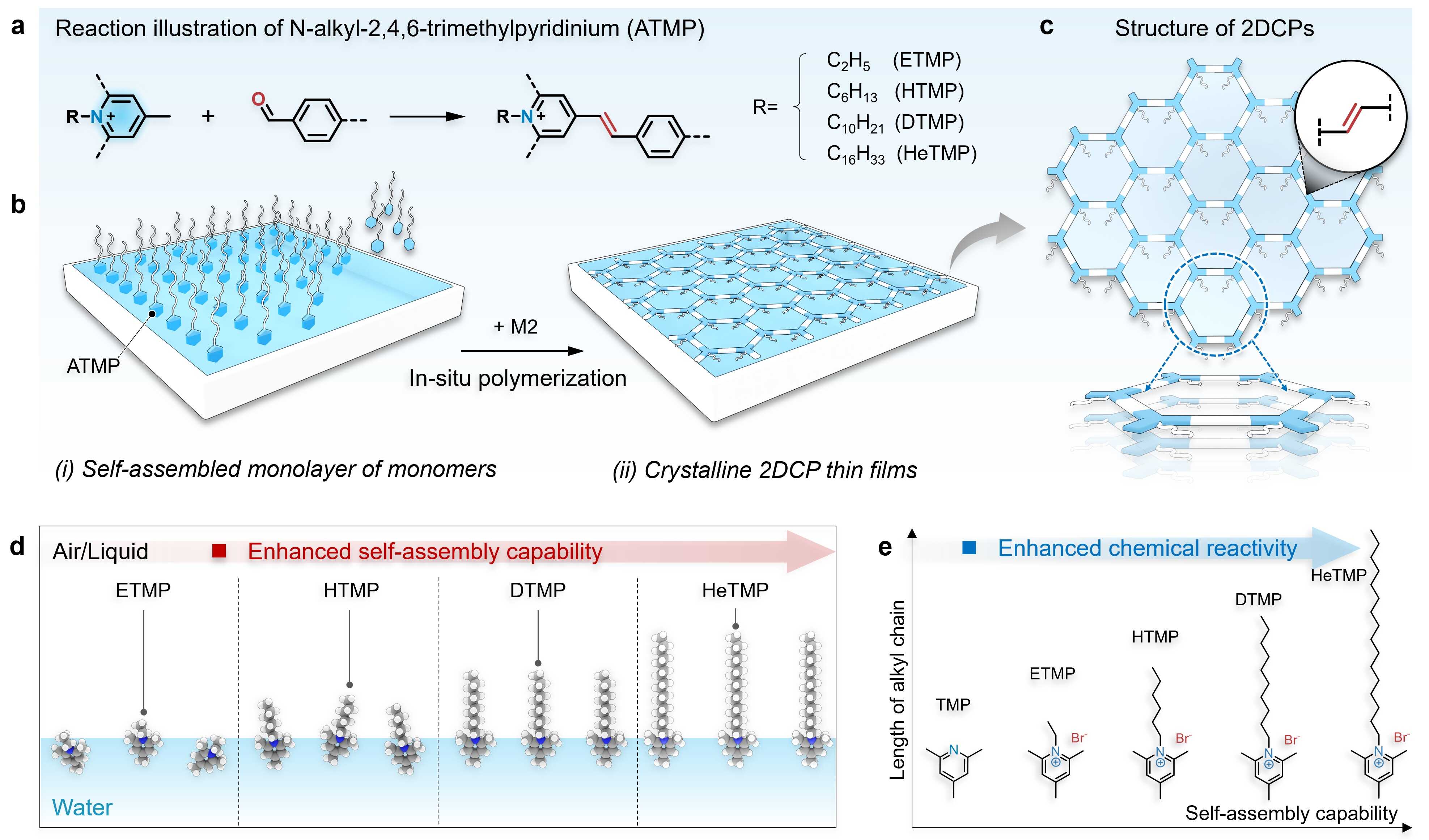Chinese scientists proposed a novel interfacial synthesis strategy to fabricate high-performance crystalline sp2-carbon conjugated two-dimensional (2D) polymer films through irreversible chemistry.
2D conjugated polymers are a class of monolayer to multilayer crystalline polymeric materials. The robust C=C bonds endow the sp2-carbon conjugated two-dimensional polymers (sp2c-2DPs) with exceptional chemical stability and extended π-conjugation, promising diverse applications from membranes to organic electronics.
Traditional interfacial synthesis methods enhable the construction of 2D conjugated polymers via dynamic covalent chemistry, e.g., C=N linkages. However, the limited reversibility of C=C bonds hampers the effectiveness of these methods for fabricating C=C linked sp2c-2DPs.
In the study published in Nature Communications, a research group led by Prof. ZHANG Tao at the Ningbo Institute of Materials Technology and Engineering (NIMTE) of the Chinese Academy of Sciences (CAS), in collaboration with Prof. FENG Xinliang at the Max Planck Institute of Microstructure Physics, synthesized crystalline sp2c-2DP thin films through an amphiphilic-pyridinium-assisted aldol-type interfacial polycondensation strategy.
The amphiphilic pyridinium monomers can self-assemble into ordered monolayers at the water interface, which significantly enhances their interfacial reactivity with aldehyde monomers. This facilitates the synthesis of sp2c-2DPs through irreversible chemistry under mild conditions.
The resultant sp2c-2DPs feature long-range molecular ordering, robust charged framework, and tunable thickness from monolayer to multilayer. These advantages empower the synthesized films to unlock the extensive potential of marine salinity gradient energy conversion.
When applied to an osmotic power generator under harsh conditions at PH=3.5, the films showed an outstanding osmotic energy generation performance with a cation selectivity coefficient (S) of 0.68 and an output power density of 51.4 W m-2.
This work paves the way for the large-scale fabrication of sp2c-2DP thin films with precise thickness control and fully conjugated linkages, unveiling transformative potential in applications ranging from advanced membrane technologies to next-generation organic electronic devices.

Fig. The amphiphilic-pyridinium-assisted aldol-type interfacial polycondensation strategy to synthesize sp2c-2DP thin films (Image by NIMTE)
Contact
ZHANG Tao
Ningbo Institute of Materials Technology and Engineering
E-mail: tzhang@nimte.ac.cn

